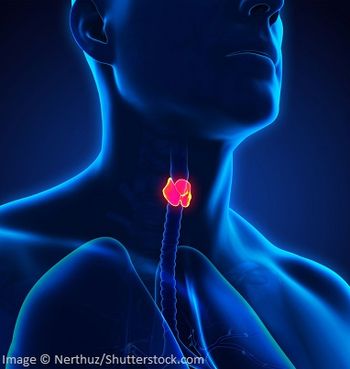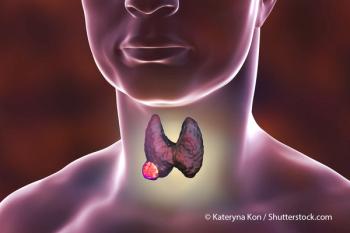
Risk Factors for Recurrence in Papillary Thyroid Cancer Identified
Researchers found several risk factors for regional nodal recurrence in patients with papillary thyroid cancer, all of which can be easily evaluated in the clinical setting.
Researchers identified several risk factors for regional nodal recurrence (RNR) in papillary thyroid cancer, all of which can be easily evaluated in the clinical setting, in a recent study
Ali et al analyzed the immunohistochemical expression of E-cadherin, P53, and BRAF as prognostic indicators for regional node recurrence of papillary thyroid cancer in primary tumors and in nodal recurrences.
A total of 145 patients with papillary thyroid cancer (73 in the study group and 72 in the control group) were retrospectively assessed from January 2010 through June 2017. Patients were categorized using the Tumor, Node, Metastasis staging system. Immunohistochemical expression of P53, E-cadherin, and BRAF were examined in the primary tumor and in nodal recurrence.
Clinicopathologic features, including age ≥ 55 years, tumor size > 1 cm, presence of microscopic extrathyroid extension, presence of lymphovascular emboli, and conventional papillary subtype, increased the risk of regional nodal recurrence. Immunohistochemical markers including negative E-cadherin, as well as positive P53 and BRAF, were also identified as risk factors. Finally, radioactive iodine adjuvant therapy lowered the risk of recurrence.
Conversely, factors including gender, unilateral or bilateral lesions, tumor necrosis, and adjacent nontumoral thyroid tissue pathology were found to not be associated with tumor recurrence.
In an exclusive interview with Cancer Network,
“However, in areas with limited availability of molecular methods, IHC [immunohistochemistry] could be used to identify cases with increased risk of RNR, and this study shows that positive P53 and BRAF and negative E-cadherin expression are associated with increased risk for RNR,” said Manroa.
Manroa also cautioned about the clinical use of immunohistochemistry. “There are concerns regarding diagnostic accuracy of IHC in detecting mutations and therefore, further studies are needed to validate these findings particularly verification with and concordance with molecular methods,” she said.
The clinical behaviors of papillary thyroid cancer are complex and variable, despite the cancer having a good prognosis. Recurrent papillary thyroid cancer is characterized either as primary tumor recurrence, lymph node metastases, invasion of the surrounding structures such as the esophagus and the trachea, or distant metastases.
“We found several risk factors for RNR in PTC diagnosed patients, all of which are easily achievable in clinical settings,” noted the researchers. “In this regard, we suggested that patients with specific clinicopathologic and immunohistochemical features have strict follow up for early detection of RNR as it has a great impact on their survival.”
Newsletter
Stay up to date on recent advances in the multidisciplinary approach to cancer.





















































































